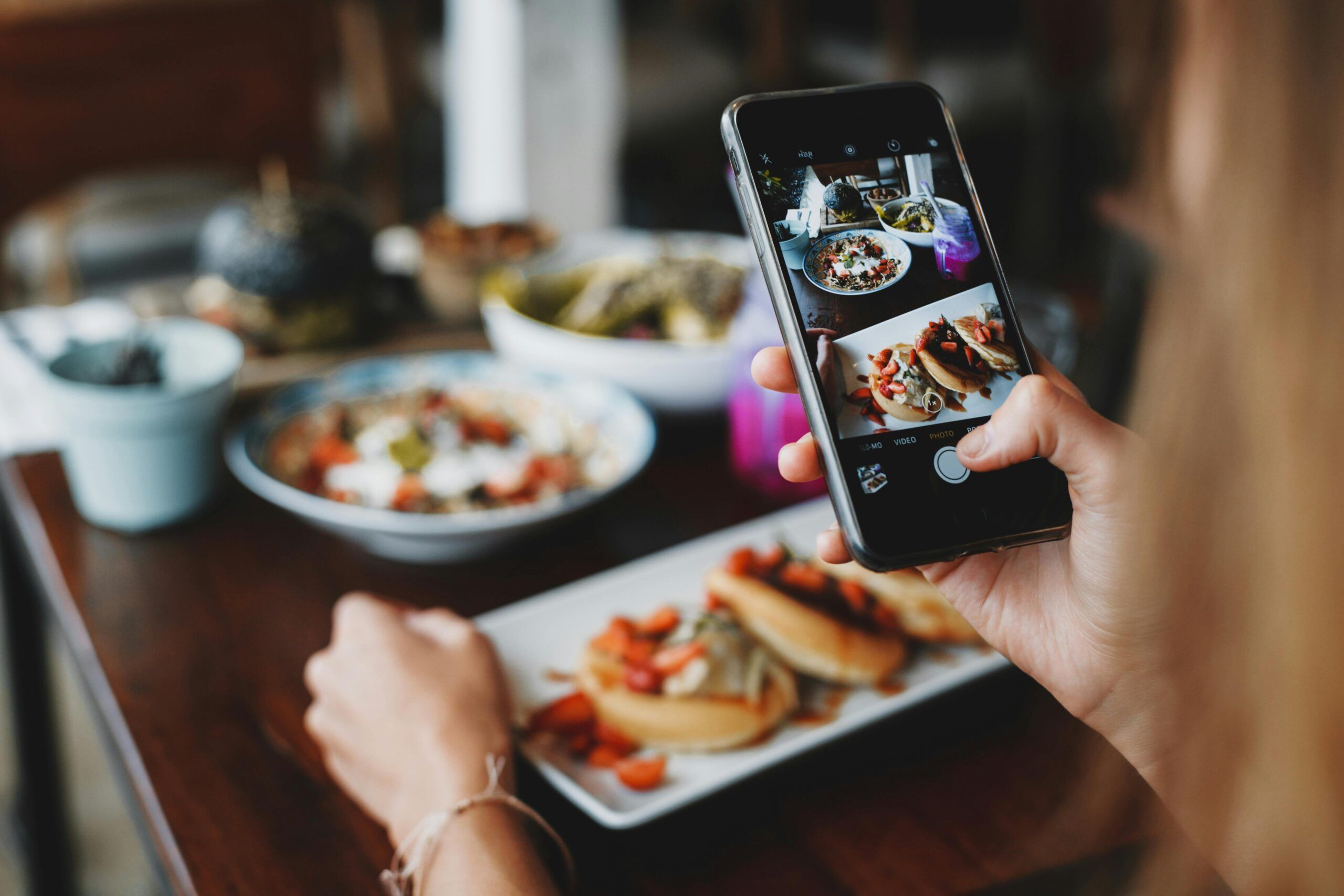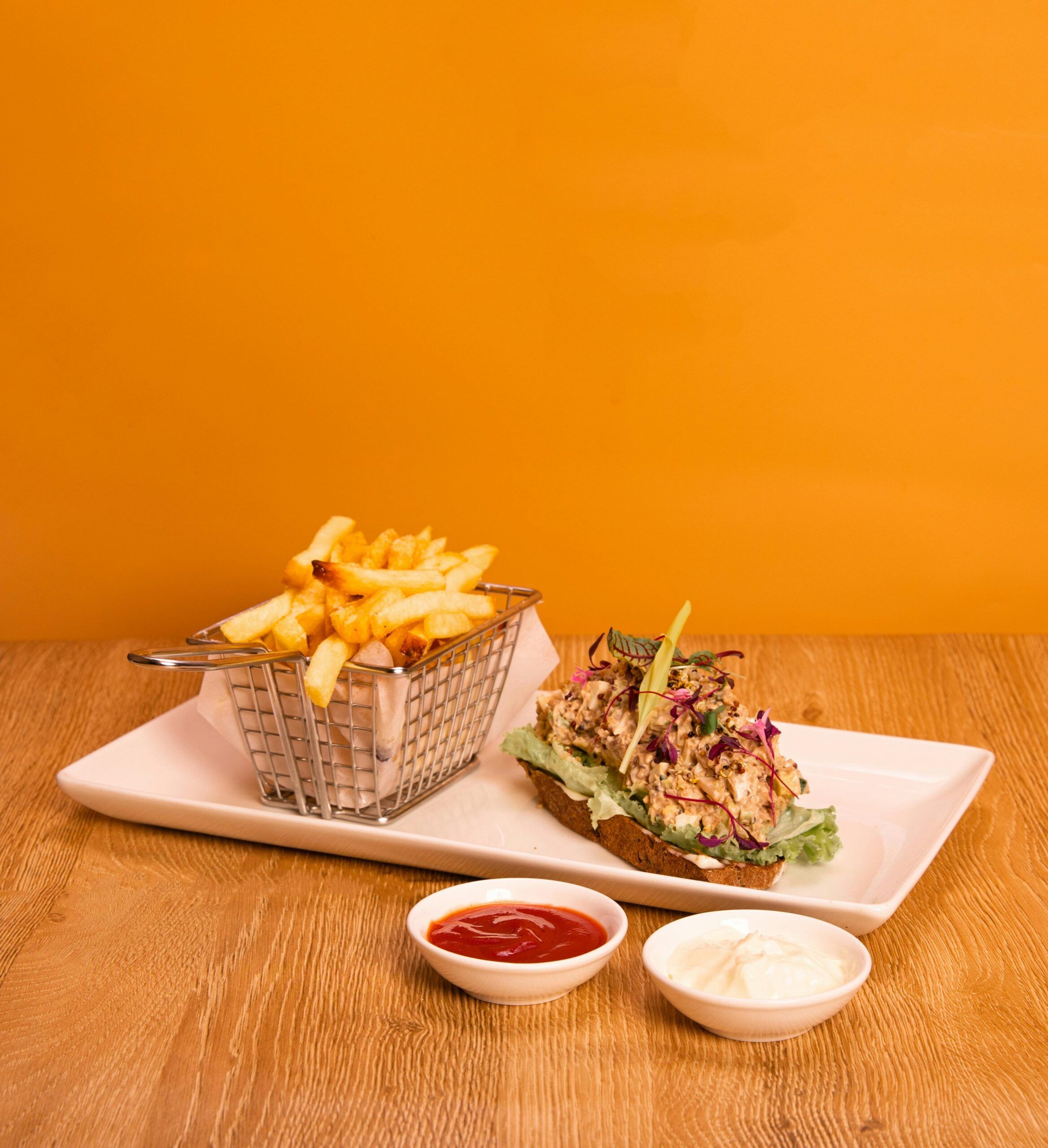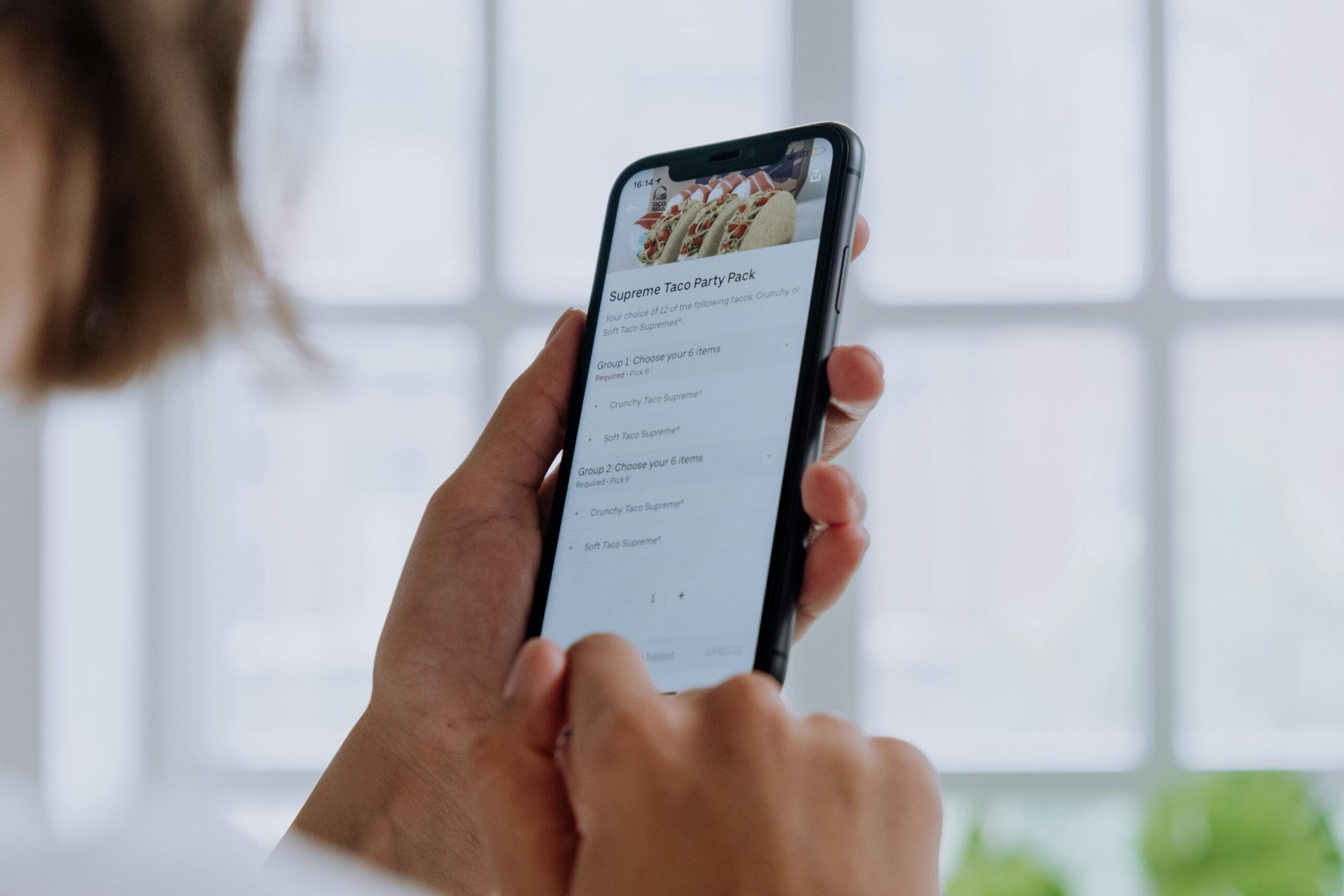- Why Menu Consistency Matters For Modern Restaurants
- 1. Use A Centralized Menu Management System
- 2. Design With Both Formats In Mind
- 3. Assign Menu Ownership Internally
- 4. Set A Menu Update Schedule
- 5. Audit For Discrepancies Regularly
- 6. Use Technology To Automate Syncing
- 7. Train Staff To Report Inconsistencies
- Keep Your Menus In Sync With Orders.co
- FAQ
Running a restaurant today means managing both what customers see online and what they see in person. If those menus don’t match, it causes problems, missed items, wrong prices, and unhappy guests.
Keeping your digital and physical menus consistent helps your team stay on the same page and gives your customers a smoother experience.
It also protects your brand and helps avoid mistakes that cost time and money.
In this post, we’ll walk through seven simple ways to make sure your menus are always in sync. Along the way, we’ll show how tools like Orders.co can make the process faster and easier to manage.
Why Menu Consistency Matters For Modern Restaurants
When your online menu doesn’t match what’s in the restaurant, things can go wrong fast. Staff might ring up the wrong price. A guest might try to order something that’s no longer available. And customers might feel like they can’t trust what they see.
Inconsistent menus cause confusion for both customers and your team. It slows things down, creates mistakes, and leads to complaints that could’ve been avoided.
More importantly, it can hurt your reputation. According to a 2024 study, mismatches between menu prices and listings across different platforms can lead to reduced customer satisfaction and loyalty.
Consistency shows that you’re organized. It tells customers that what they see is what they’ll get. And in a competitive market, that kind of trust goes a long way.
That’s why keeping your menus aligned, everywhere they appear, isn’t just a nice touch. It’s a basic part of running a smooth operation.
Orders.co’s menu management feature helps by providing a single platform to manage all your menus, making updates easier and reducing the likelihood of errors.
See How It Works
1. Use A Centralized Menu Management System
If you’re managing menus in multiple places, your POS, your website, third-party apps, and printed copies, it’s easy for things to get out of sync. A centralized menu management system helps fix that.
Instead of updating each platform one by one, you can make changes in a single place and push them out everywhere. This saves time, reduces mistakes, and helps maintain digital and physical menu consistency across all channels.
Here’s what a centralized system allows you to do:
- Make pricing and item updates once, then sync across all platforms
- Avoid mismatched menus between dine-in and delivery
- Keep third-party listings (like DoorDash or Uber Eats) current
- Minimize staff confusion with one reliable source of truth
It also lowers the risk of showing old items or out-of-date pricing, which can cause problems for both staff and customers. When all your menus pull from the same system, it’s easier to stay accurate and up to date.
That’s where a tool like Orders.co helps. It gives restaurants a simple way to manage menu changes across platforms without bouncing between different tools.
For operators looking for guidance on how to update restaurant menu content reliably, starting with a restaurant menu software solution that centralizes updates is a smart move. It’s one of the easiest ways to maintain menu consistency, whether you’re managing one location or many.
2. Design With Both Formats In Mind
Menus should work well both online and in print. What looks clear on a phone screen might not translate well to paper, and vice versa. To avoid confusion, plan your menu design for both formats from the start.
Make sure item names, descriptions, and prices match no matter where they appear. That consistency builds trust and keeps operations running smoothly.
Here are a few tips to help:
- Keep item names and prices identical across platforms
- Use short, scannable descriptions that work for mobile and print
- Match branding (fonts, colors, logos) wherever possible
If you’re using digital menu board management tools, this becomes even more important. Even small mismatches can slow things down or cause order errors.
Orders.co makes it easier to manage both. You can update your digital menus and also generate printable versions that reflect the same changes, keeping your digital and physical menu consistency intact across every channel.
Also, read:
- Restaurant Menu Optimization: 10 Steps For A Menu That Sells
- The Ultimate Guide To Selecting A Menu Management System For Restaurants
- How Your Restaurant Can Benefit From A QR Digital Menu
3. Assign Menu Ownership Internally
If everyone’s responsible for the menu, no one really is. That’s how things get missed, prices don’t match, old items stay live, and updates fall through the cracks.
Assign one person or a small team to manage all menu changes, both digital and physical. This keeps things consistent and avoids delays.
With Orders.co, that person can handle updates in one place, across all platforms. It’s a simple way to protect digital and physical menu consistency without extra steps.
4. Set A Menu Update Schedule
Menu updates often happen last-minute. That’s when mistakes slip in—prices don’t get changed everywhere, old items linger online, or print files go out of date.
Setting a regular update schedule helps prevent that. Whether it’s weekly, monthly, or tied to seasonal changes, having a set routine keeps your team organized and your menus consistent.
Here’s what a good update schedule includes:
- A fixed day and time for reviewing menu changes
- A checklist of platforms to update (POS, online, third-party apps, print)
- Time for a final review before updates go live
- Staff communication once updates are confirmed
With a tool like Orders.co, updates can be made in one place and pushed out everywhere. That makes it easier to stay consistent without creating extra work.
Sticking to a schedule helps maintain digital and physical menu consistency and saves your team from last-minute errors.
5. Audit For Discrepancies Regularly
Even with a solid process, things can slip through. That’s why it’s important to regularly check for differences between your printed menus and what’s online.
A quick monthly audit can catch:
- Old items still showing on delivery apps
- Pricing mismatches between platforms
- Missing updates on printed materials
- Incorrect categories or modifiers
You don’t need a formal process, just someone checking your digital and physical menus side by side. Some restaurants even use staff checklists or spot-check during pre-shift.
Orders.co makes this easier by showing your menu across platforms in one view. That means you can spot issues early and fix them before customers notice.
Want to see how it works in real time?
Schedule a demo and find out how Orders.co can help your team stay on top of every menu update, online and in-store.
6. Use Technology To Automate Syncing
Manual updates leave too much room for error, especially when you’re juggling menus across a website, delivery apps, POS systems, and print. The more platforms you use, the more likely something gets missed.
This is where automation helps. Using the right tools, you can sync menu changes across all channels with just a few clicks. No more chasing down old versions or making the same update in five different places.
Orders.co offers this kind of automation. When you update your menu in the platform, those changes sync across your systems, including online ordering, delivery services, and printable formats. It simplifies how you manage restaurant online menu updates and supports long-term menu consistency.
If your restaurant is growing or managing multiple platforms, automating this process is one of the smartest ways to maintain digital and physical menu consistency without adding to your workload.
7. Train Staff To Report Inconsistencies
Your staff are the first to spot when something’s off. Maybe a guest asks about a dish that’s not on the printed menu, or the POS shows a different price than the delivery app. These are small issues, but they add up fast.
That’s why it’s important to train your team to speak up. A quick note from a server or a shift lead can help you catch and fix mistakes before they affect more orders.
Make it part of your process:
- Encourage staff to flag menu mismatches
- Create a simple way for them to report issues (like a shared doc or message thread)
- Acknowledge feedback so they know it matters
When staff know what to look for and feel confident reporting it, you’ll catch more problems early. Combined with the right tech, like Orders.co, it’s an easy way to support digital and physical menu consistency every day.
Keep Your Menus In Sync With Orders.co
Keeping your digital and physical menus consistent doesn’t have to be a daily struggle. With the right tools, restaurant operators can reduce mistakes, save time, and keep both in-store and online experiences aligned.
Orders.co brings everything together in one place to make this process easier and more reliable for busy teams.
Here are just a few ways Orders.co supports real-time menu consistency and smarter restaurant operations:
Menu Management
With Menu Management, you can update item names, pricing, categories, and descriptions across all platforms from one dashboard. It’s one source of truth for your in-house menus, online listings, and third-party delivery platforms.
Custom Ordering Website
Custom Ordering Website lets you set up a branded, commission-free online menu that reflects your most accurate offerings. Any updates made to the backend sync directly to what customers see, giving them a consistent experience every time.
Orders Consolidation
Through Restaurant Online Orders Management, you can manage incoming orders from apps like DoorDash, Uber Eats, and Grubhub in one system. This reduces tablet clutter, saves time during service, and prevents missed or duplicated menu items.
AI Website Builder
The AI Website Builder helps you launch a professional online presence fast. Using restaurant-specific prompts, it builds your menu and ordering site while syncing with your physical setup.
Marketing Tools
Marketing Tools include automated email and SMS campaigns, as well as a rewards program. Promotions and featured items stay aligned across digital menus and customer outreach, helping drive repeat business with clear offers.
Local SEO and Review Monitoring
With Local SEO and Review Monitoring, your most accurate menu data shows up where people search—on Google, Yelp, and maps. You can also view and respond to reviews from one dashboard to protect your reputation.
Dine-In QR Ordering
Dine-In QR Ordering allows customers to scan and order from their phones using the same menu they’d see online. You can even offer printable menus that reflect your most current updates.
Analytics and Reports
Analytics and Reports give you a real-time view of menu performance, customer behavior, and revenue trends. These insights help you decide what to feature or remove based on real data, not guesswork.
Ready to bring it all together?
Schedule a demo and see how Orders.co helps restaurants stay consistent, accurate, and efficient across every menu and every platform.
FAQ
1. Why is menu consistency important in restaurants?
It keeps your operation efficient and your customers confident. When menus match across platforms, staff work faster, orders are accurate, and guests know what to expect. It also protects your brand from appearing unorganized or unreliable.
2. How can digital menu updates affect in-store service?
If your digital menus aren’t current, staff may take incorrect orders or offer the wrong pricing. This leads to delays, customer complaints, and wasted time fixing preventable mistakes. A synced menu keeps the whole team aligned and reduces service friction.
3. What tools help keep menus in sync?
Centralized platforms like Orders.co let you manage digital and physical menus from one place. They reduce manual updates, prevent version mismatches, and support syncing across delivery apps, your website, and printed formats, all key to strong digital and physical menu consistency.
4. How often should I review my menus for consistency?
At least once a month, or anytime you launch a new item or promotion. Regular audits catch mistakes before they cause issues and help keep your online and in-store menus aligned and up to date.
5. Who should be responsible for menu updates?
Assign one point person or team to manage all menu changes. This creates accountability and avoids overlap or confusion. With the right tools in place, this person can update everything quickly while keeping your menu accurate across every customer touchpoint.


